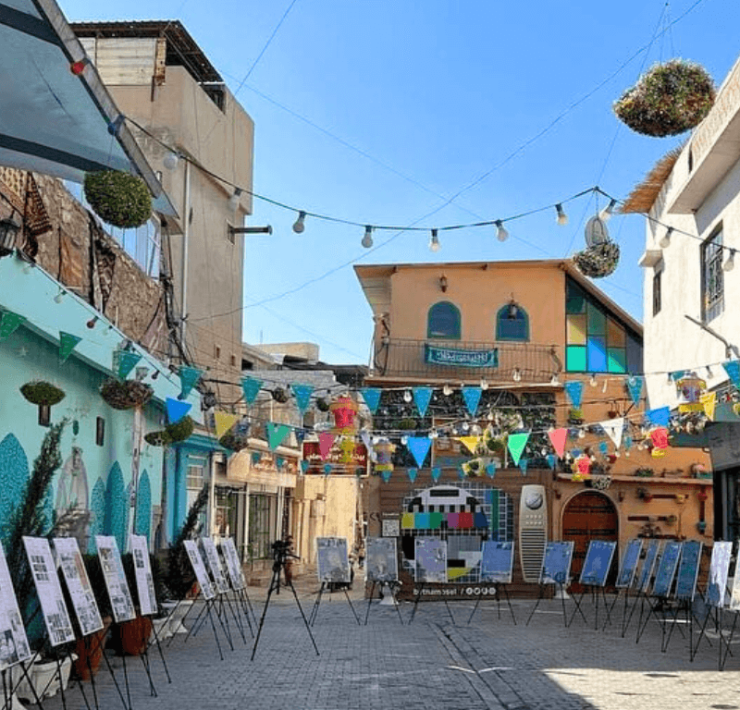Jewellery in North Africa and Southwest Asia has always played a far more significant role than just that of adornment. It served to communicate social status, wealth and identity, had practical values as an indispensable part of dress and attire and worked its charm as amulets or talismans for the wearer. One of its most valued functions was that of portable wealth, a practice that finds its origin in the times before finances almost automatically included monetary currency and banks. As such, jewellery was a major factor in female financial independence.
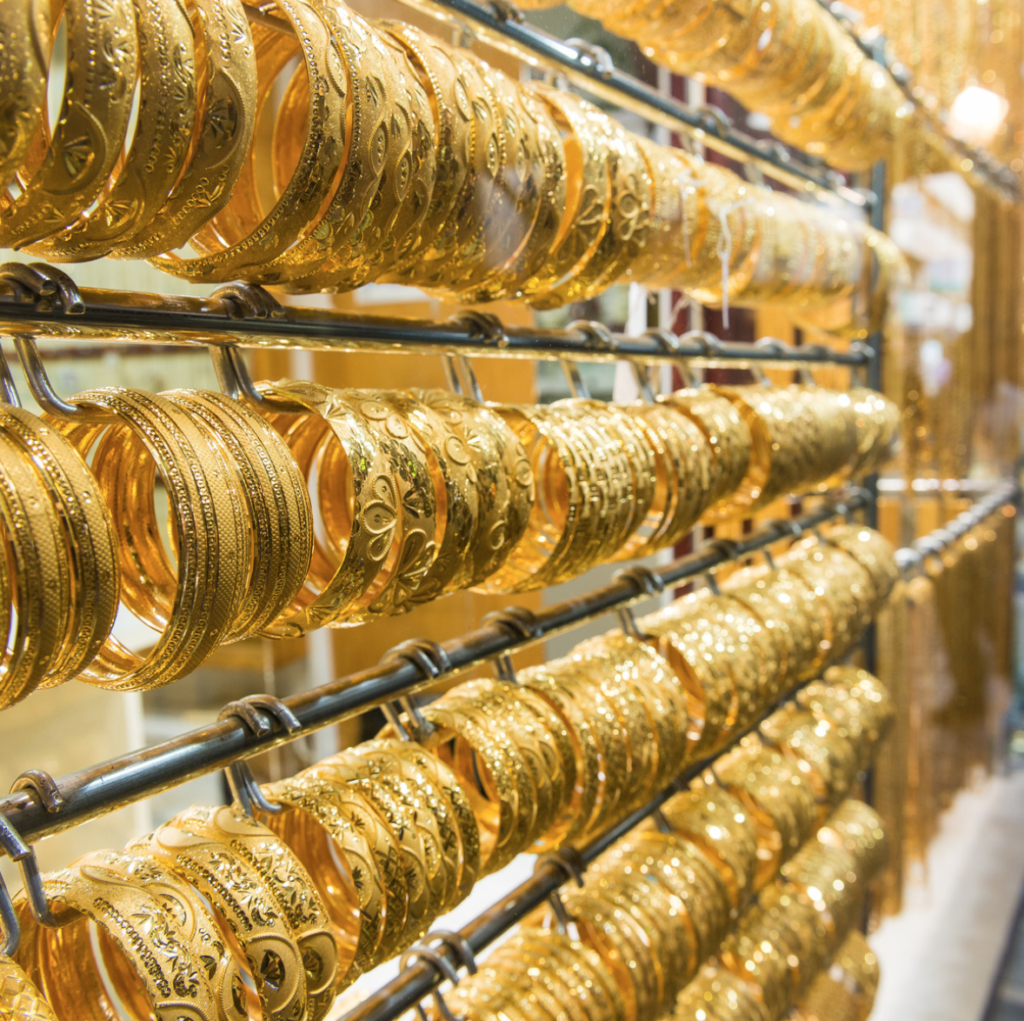
Marriage
The main occasion when a woman would build up capital in the form of jewellery was on the occasion of her wedding. Wedding jewellery was not to be seen as merely a sentimental gift from her future husband or as a symbolic token of a bond, such as a wedding ring, but formed the basis of her independent wealth. It would form a significant part of the dowry, generally known as mahr. That is because the dowry constitutes a woman’s private funds and are hers to keep, should her husband choose to divorce her. Obviously, the family of the bride would want her well taken care of, while the family of the groom might have other sons to marry off and consequently faced a larger financial responsibility. The mahr continues to be a much debated topic today.
Dowry negotiations
The dowry negotiations were complex affairs, and what exactly constituted a decent dowry varied from country to country, from tribe to tribe and from village to village. The role of jewellery in the mahr is reflected in the names of some jewellery items, such as the ‘lazeem’-necklace that in Yemen simply had to be part of the gift. An example from early 20th century Morocco lists a large silver nose-ring, a silver necklace and silver bracelets as part of the dowry.
The timeliness of paying the dowry also varied across the region. In many cases, the payment was split between engagement and marriage, and quite often the mahr was never paid in full. In those cases, a clause in the marriage contract would stipulate that the remainder had to be handed over in case of a divorce or when the husband died. In essence, the husband and his family would thus be in debt with his wife. Failing to deliver the promised funds did however bring one benefit, as it effectively barred future attempts to take a second wife.
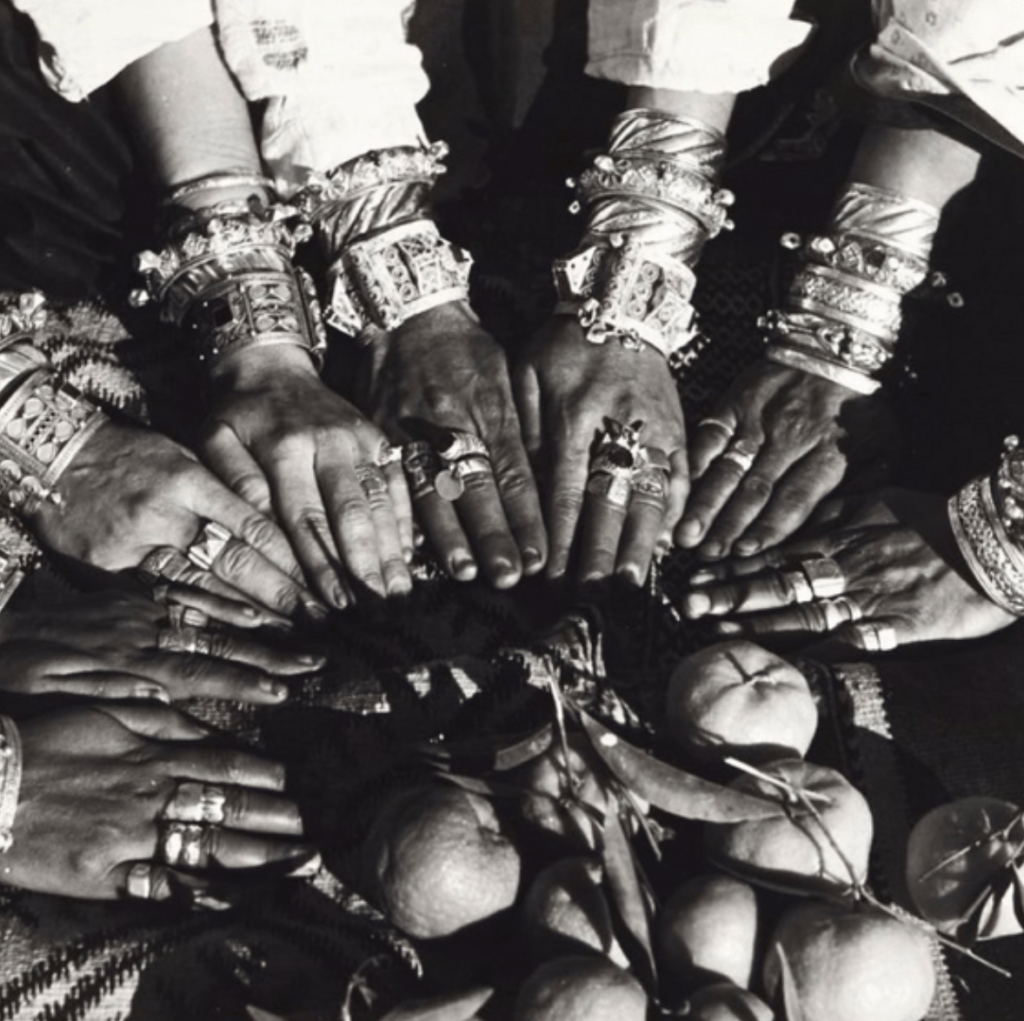
Wedding jewellery and the community
The jewellery that was part of the dowry was in many cases displayed at the wedding celebrations for all to see and inspect. This served several purposes. Of course, there was the element of showing off the successful deal that had been struck, but it also had two more practical reasons. First, this practice ensured that everyone in the community had seen the jewellery. Should some of it need to be sold off in the future to cover household emergencies, the husband would owe his wife this part of her personal capital, and displaying it at the wedding was a form of storing the size of the dowry in the collective memory.
Second, the display of jewellery contributed to the system of checks and balances in the community, serving as a reference for future marriages and the redistribution of wealth. Not only the groom, but relatives as well would present the bride with jewellery articles. In Palestine for example, a Hebron bride would wear a miqlab, a vest of sorts on which her aunts and other female relatives would attach silver coins and other valuable pieces. All of these gifts were collectively kept track of through mental ‘book-keeping’ by women: they would expect the same weight and amount of silver to be returned when one of their daughters married.
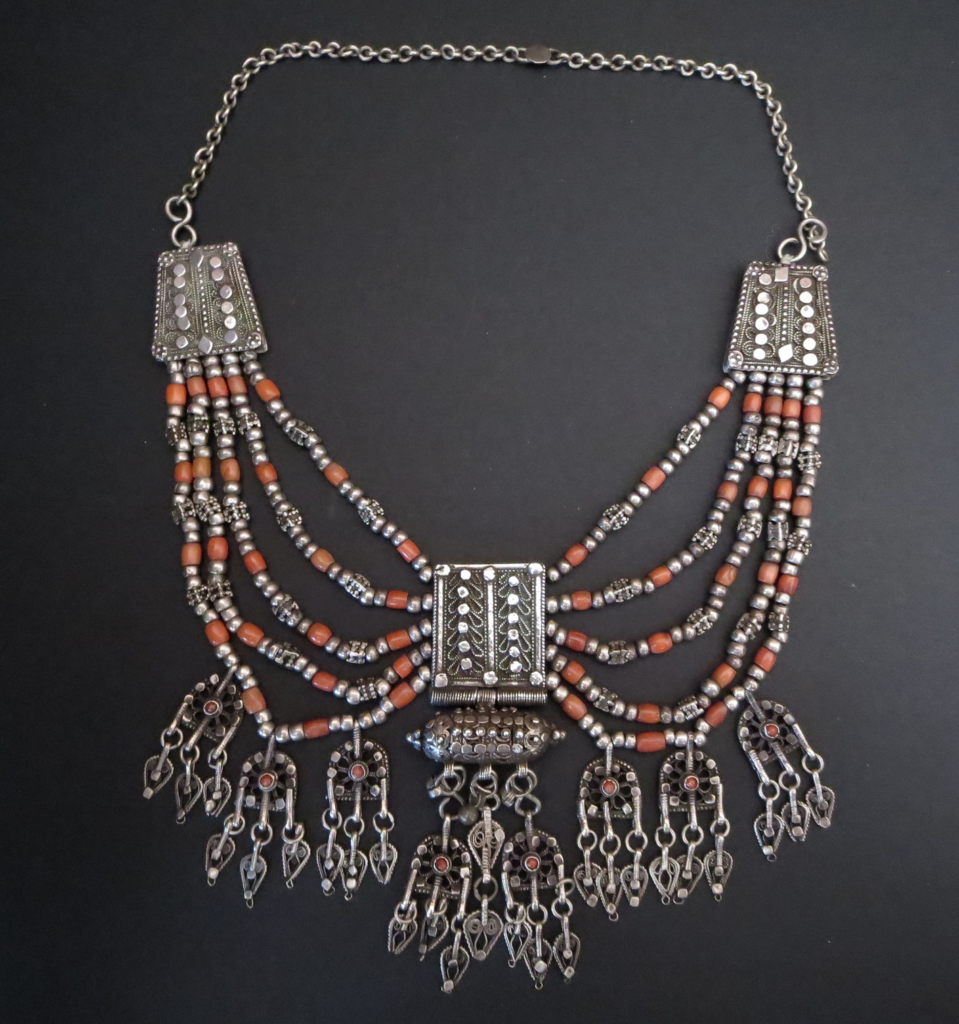
Jewellery and the household economy
The private capital of a woman was not used to pay household bills or other household expenses: this is the responsibility of the man, and women should not have to pay for these. However, when an emergency occurred such as hospitalization of a family member, there might not be enough funds in the family. This is where jewellery came in. As jewellery keeps its value over time, unlike currency, jewellery items were used both as savings and as emergency cash. Just think of the current crisis in Yemen, where rivaling banks aligned with different factions issue their own banknotes, to get an idea of the instability of currency. In situations like these, reverting to jewellery has been the way to go for centuries.
This use of jewellery as an investment is also seen in the informal cooperative networks formed by women throughout the region, that continue to function today. Each woman in the network makes a monthly contribution of a small sum. Each month, the total amount of money the network generates is given to a particular member who can use the funds to help cover any larger family expenses she might have. This sum of money was just as often used in the past to buy jewellery in order to replace items that had to be sold.
Parting with jewellery
During the course of her life, a woman would part with her jewellery items gradually. When the dowry of a daughter-in-law had to be financed for example, in some regions the capital of his mother was partly spent on this. Having used her private capital for her son, the mother would then be taken care of by her son and his family as she grew older. This practice however did not mean that jewellery pieces were passed on or inherited: old jewellery was melted down and turned into new jewellery items for each bride. That is also why it is relatively rare to find jewellery items that are older than one generation, although they do exist.
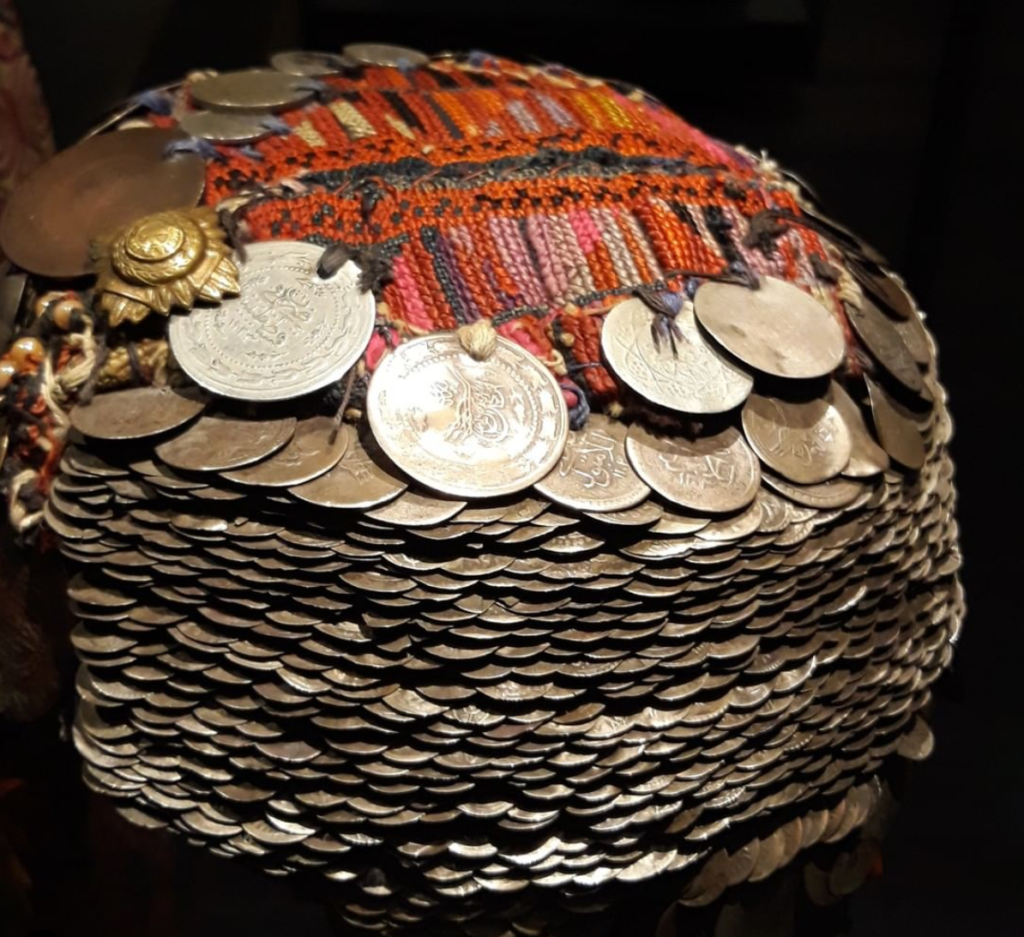
Jewellery as a historical source of economic data
While the above introduction is general and the reality endlessly more intricate and varied according to the country, region, tribe and even village, the practice of jewellery serving as an investment and savings account is one rarely explored in economic studies into microfinancing. A significant part of the economy in North Africa and Southwest Asia (and beyond) is informal and does not revolve around banks, but sits safely and securely around the wrists, fingers and necks of women.
In this respect, jewellery is also a valuable historical source. By looking into jewellery from an economic point of view, it becomes possible to learn more about both household economies and wider socio-geographical landscapes. Just one example of how this works are coins used in jewellery, which indicate the length and width of trade networks as well as political alliances. Russian kopecks in the Levant show how far the influence of Russia and later the Soviet Union stretched, while French gold Napoléons form a visual attestation to colonial occupation in the Maghreb.
There is much to be gleaned from jewellery: it offers unique glimpses into the lives of savvy women who managed their own financial affairs with a determination that non-Arab women could learn a thing or two from!
Sigrid van Roode is a jewellery historian and archaeologist specialising in personal adornment from North Africa and Southwest Asia. Her research addresses jewellery as material culture of society and focuses in particular on the relation between jewellery and ritual, magic and religion. She is currently working on her PhD, researching jewellery and ritual at Leiden University. With her consultancy company Bedouin Silver she works with museums and private collectors to ensure collected jewellery continues to hold its potential as both historical source and as a carrier of identity. Her books, Desert Silver and Silver & Frankincense showcase her passion for her topic. You can connect with her on Instagram (@bedouinsilver) to learn more or to share your stories!






